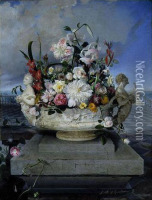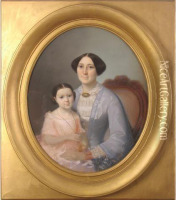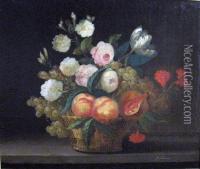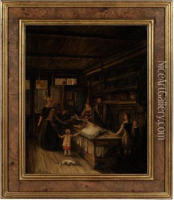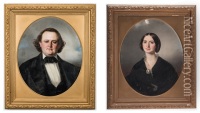Louis Mathieu Didier Guillaume Paintings
Louis Mathieu Didier Guillaume was a French painter born on August 15, 1816, in Paris. He was known for his historical and genre paintings, as well as his work as a lithographer. Guillaume's career was significantly shaped by the artistic movements of the 19th century, particularly Romanticism, which was characterized by an emphasis on emotion and individualism as well as glorification of the past and nature.
Guillaume studied under influential artists of his time, including Léon Cogniet, a historical and portrait painter. His education prepared him to exhibit at the prestigious Paris Salon, an official art exhibition of the Académie des Beaux-Arts in Paris. The Salon was the primary method for artists to make a name for themselves in France and across Europe. Guillaume's works were exhibited at the Salon from the 1840s onwards, and he received a third-class medal in 1848.
During his career, Guillaume created works that often depicted scenes from French history, aligning with the Romantic interest in the nation's past. This was a time when historical painting was considered the most noble genre, as it was associated with high intellectual and moral messages. His paintings typically involved careful composition, dramatic lighting, and vivid character portrayal, which aimed to evoke an emotional response from the viewer.
Guillaume's lithographs also contributed to his reputation. Lithography, invented in the late 18th century, had become a popular form of printmaking in France, especially for the reproduction of artworks. Guillaume's lithographs would have made his work more accessible to the public and helped to disseminate his style and historical narratives.
Despite being less well-known today, during his lifetime, Guillaume was a respected member of the French artistic community. He was awarded the Legion of Honour, France's highest order of merit for military and civil merits, in 1859. Louis Mathieu Didier Guillaume passed away on May 31, 1892, in Paris. His works remain part of the art historical record of France's Romantic period and continue to be studied for their cultural and historical significance.

